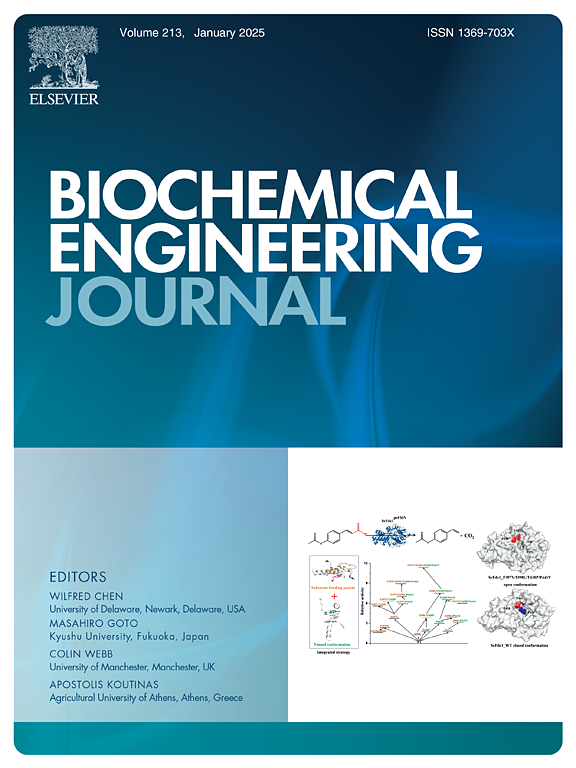An optimized triple-plasmid system with enhanced viral and helper gene expression for improved recombinant adeno-associated virus production
IF 3.7
3区 生物学
Q2 BIOTECHNOLOGY & APPLIED MICROBIOLOGY
引用次数: 0
Abstract
Recombinant adeno-associated virus (rAAV) is a preferred gene therapy vector due to its safety and efficacy. The predominant production method relies on a transient expression system utilizing mammalian cells, though low production efficiency and high dosage requirements increase costs and limit large-scale applications. The triple-plasmid system forms the basis of rAAV transient expression, where the genetic elements and their configurations significantly impact production efficiency. Here, we developed two novel triple-plasmid transient expression systems, AAV-RepE4 and AAV-RepDBP, leveraging insights into essential viral gene elements and helper components. The rAAV titer of HEK293F cells transfected with the AAV-RepE4 system increased by 2.6-fold compared to the traditional triple-plasmid system, and its single-cell packaging capacity improved by 2.2-fold. Notably, the AAV-RepE4 system exhibited higher expression levels of rep52/rep40 and a relatively moderate upregulation of rep78/rep68. This optimization facilitated viral genome synthesis and packaging while supporting favorable host cell conditions. These findings offer valuable insights into the characteristics of the viral vector production process and offer theoretical guidance and new strategies for optimizing gene therapy vector manufacturing.
求助全文
约1分钟内获得全文
求助全文
来源期刊

Biochemical Engineering Journal
工程技术-工程:化工
CiteScore
7.10
自引率
5.10%
发文量
380
审稿时长
34 days
期刊介绍:
The Biochemical Engineering Journal aims to promote progress in the crucial chemical engineering aspects of the development of biological processes associated with everything from raw materials preparation to product recovery relevant to industries as diverse as medical/healthcare, industrial biotechnology, and environmental biotechnology.
The Journal welcomes full length original research papers, short communications, and review papers* in the following research fields:
Biocatalysis (enzyme or microbial) and biotransformations, including immobilized biocatalyst preparation and kinetics
Biosensors and Biodevices including biofabrication and novel fuel cell development
Bioseparations including scale-up and protein refolding/renaturation
Environmental Bioengineering including bioconversion, bioremediation, and microbial fuel cells
Bioreactor Systems including characterization, optimization and scale-up
Bioresources and Biorefinery Engineering including biomass conversion, biofuels, bioenergy, and optimization
Industrial Biotechnology including specialty chemicals, platform chemicals and neutraceuticals
Biomaterials and Tissue Engineering including bioartificial organs, cell encapsulation, and controlled release
Cell Culture Engineering (plant, animal or insect cells) including viral vectors, monoclonal antibodies, recombinant proteins, vaccines, and secondary metabolites
Cell Therapies and Stem Cells including pluripotent, mesenchymal and hematopoietic stem cells; immunotherapies; tissue-specific differentiation; and cryopreservation
Metabolic Engineering, Systems and Synthetic Biology including OMICS, bioinformatics, in silico biology, and metabolic flux analysis
Protein Engineering including enzyme engineering and directed evolution.
 求助内容:
求助内容: 应助结果提醒方式:
应助结果提醒方式:


